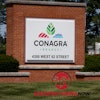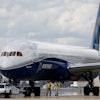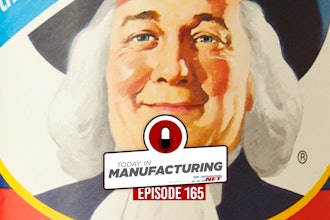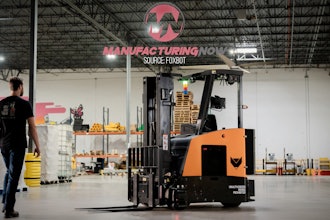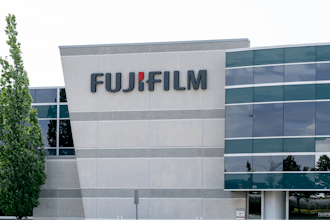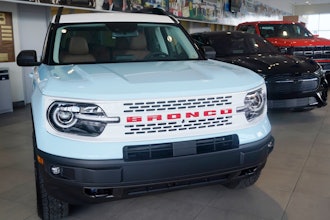A growing number of food and beverage manufacturers are turning to advanced shaft and belt alignment systems, often equipped with laser sighting. The trend, which affects diverse food sectors, is fueled by the prospect of lower energy costs, reduced downtime and better overall machine reliability.
Traditionally, maintenance workers at food facilities have used straightedges and visual inspection to align the shafts and belts of coupled machinery, including electric motors, pumps, fans, gearboxes, mixers and conveyors. But this method lacks the accuracy required for optimal alignment. Even a few degrees of misalignment can generate additional loads and vibration that damage bearings, seals and couplings. The results can be unplanned downtime, lost production and even spoilage of food ingredients and products.
The use of dial indicators is another common alignment method. Although these instruments offer greater accuracy than straightedges, they require considerable training and skill to employ properly. Also, dial indicators need to be removed and reattached multiple times during a typical alignment procedure.
In contrast to older methods, advanced shaft/belt alignment systems benefit from the latest innovations in electronics and instrumentation. They generally utilize laser sighting and provide much greater accuracy than methods using straightedges. Unlike dial indicators, they require only minimal operator training and deliver real-time data during alignment adjustments.
Advanced shaft alignment systems often have a “soft foot” function that checks machine foundations. It verifies that rotating machines stand evenly on all feet, a prerequisite for proper alignment. Many systems also store alignment settings and results and can upload them via USB cables to PCs for analysis.
Despite differences in plant size and process complexity, there are many similarities in basic processing operations and equipment across food manufacturing sectors. The shift towards advanced alignment practices and systems is expected to grow as more food companies in diverse segments recognize the technology’s utility and broad ranging benefits.
Following are three examples of how food manufacturers have put advanced alignment technology to productive use:
Netherlands Brewery Cuts Energy Use
Rising energy costs prompted a beer producer in the Netherlands recently to modernize its alignment practices. The increase in energy consumption was traced to misalignment affecting 75 pump applications. The pumps transport water and finished product at the brewery.
To address the problem, the brewery equipped its maintenance department with two shaft alignment systems with built-in laser sighting. The systems each consist of a hand-held control unit attached to dual measuring units. During alignment, maintenance technicians position the measuring units on opposing shafts at distances that can range from several inches to nearly 3 feet apart. The units each emit a laser line that is picked up by the other unit’s detector. The technicians view real-time alignment values on the control unit’s display screen, allowing them to adjust shafts horizontally and vertically until they are correctly aligned.
Employing the new alignment systems, the brewery lowered the pumps’ energy consumption by nearly $40,000 annually, a 5 percent total reduction. Based on lower energy costs alone, the brewery recouped its total investment in the new equipment in just over four months.
India Food Processor Reduces Downtime
At a food processing facility in India, the costly impact of unplanned downtime triggered a review of alignment practices. The facility, which processes items such as dairy products and coffee powder, had experienced misalignment problems in 20 critical motor/compressor and motor/feed roller applications. The problems affected both shaft- and belt-driven machinery. Misalignment in belt-driven machinery causes wear on pulleys and belts, increases vibration and friction and eventually results in bearing or belt failure.
During a planned shutdown, the plant’s reliability team assessed the problem applications. After a thorough inspection, the team identified inadequate alignment methods as the root cause of misalignment. At the team’s recommendation, the facility phased in advanced shaft and belt alignment instruments.
The new belt alignment system placed into service consisted of a laser-emitting unit, a receiver unit and V-guides designed to position the units within pulley grooves. The receiver’s three-dimensional target area permits easy detection of horizontal, vertical and parallel misalignment between pulleys that are up to 20 feet apart. During alignment, the operator made the necessary adjustments until the emitting unit’s laser line corresponded with the receiver unit’s reference line. The belt alignment system accurately aligned the grooves of pulleys rather than their faces, facilitating alignment of pulleys having unequal widths or dissimilar faces.
The change in alignment methods brought quick results. The facility reduced unplanned downtime affecting production by 36 hours annually, resulting in increased machine availability valued at $38,000. The Mean Time between Repairs (MTBR) rate for the 20 applications rose from five to 17 months. Additional benefits include reduced labor and repair expenses associated with unplanned downtime.
U.S. Pet Food Maker Doubles MTBR
In a third example, a Maryland pet food manufacturer recently adopted more modern alignment practices. The company began using laser-equipped shaft alignment instruments in 18 rotating-equipment applications. The result was an increase in MTBR from 12 to 24 months.
In addition, the pet-food manufacturer reduced unplanned downtime affecting production by 36 hours annually, resulting in savings of $36,000. Reductions in labor costs and other repair-related expenses amounted to more than $4,000.
Paul Michalicka is North American area sales manager for maintenance products, SKF USA Inc., based in Kulpsville, Pa. He can be contacted at [email protected]; phone: 416-299-2894.
